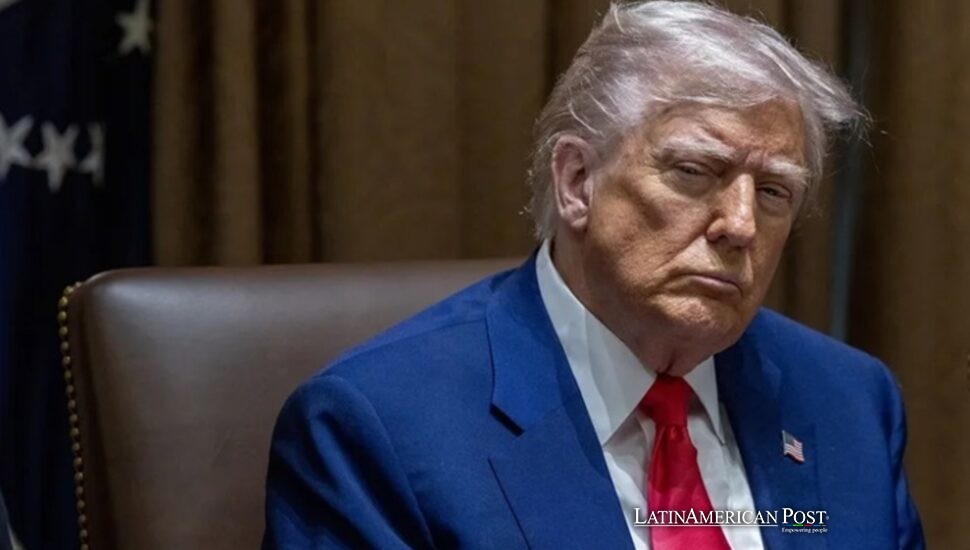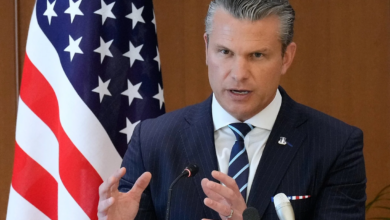Mexico’s High-Stakes Water Pact with Washington

Texas immediately requires water deliveries, and Washington is threatening sanctions. Mexico is at a key point in its relationship with the U.S. Yet, President Claudia Sheinbaum promises to meet treaty terms, even though the nation faces issues. Because of this, the role of water in U.S.-Mexico diplomacy has gained notice.
A Treaty Under Pressure
The 1944 Water Treaty has functioned as a quiet pillar in Mexico and the United States’ relationship for decades. Most people on either side of the border scarcely register its existence—until droughts, economic pressures, or diplomatic disputes place it in the spotlight. Under the agreement, Mexico must supply roughly 2,160 million cubic meters of water to the United States every five years. At the same time, the U.S. delivers a separate amount—about four times larger—into Mexican waterways.
At first glance, the arrangement favors Mexico since the United States injects more water southward than Mexico does northward. Yet it is not so simple. When severe drought hits the Río Bravo (Rio Grande) basin, Mexican authorities struggle to send the required volume, sparking outrage in Texas, whose agricultural sector heavily depends on cross-border irrigation. The treaty’s terms may look balanced on paper, but the flow of water is determined by real-world conditions—rainfall, dam infrastructure, and ever-shifting climate patterns.
Reduced rainfall occurred in sections of northern Mexico recently. This intensified the rivalry for the few water resources available in that region. Mexican farmers near the Río Bravo require these resources, similar to Texan farmers. President Claudia Sheinbaum, responding to a fast-escalating diplomatic row, cites nearly four consecutive years of drought as a factor limiting immediate deliveries. According to her administration, the International Boundary and Water Commission (commonly referred to in Spanish as the CILA) is searching for technical alternatives to fulfill treaty obligations without depriving Mexican communities and farmers of vital water.
The tension that bubbled in backroom negotiations has now burst into public view. In March, Texas lawmakers urged U.S. President Donald Trump to take a stricter stance, claiming Mexico owed more than 1.6 billion cubic meters of water. They pressed for leverage in trade talks, alleging that Texas loses up to 993 million dollars annually in agricultural income when Mexico falls behind. They pointed to the 1944 treaty as a binding legal instrument that must be enforced—even if that means economic reprisals or sanctions.
Even with all the noise, Sheinbaum says the treaty stays “just” and balanced if both countries admit the altered hydrological realities. She refuses to believe Mexico intends to cancel or rework the arrangement since an even water allocation has been in both countries’ best interests for a long time. But her pledge of an “immediate delivery” to Texas points to the real amount of pressure. Then, she has to manage a sensitive position. She wants to prove good faith to Washington, and she also wants to assure her regions hit by drought that their water requirements are not being harmed.
Fears of Sanctions and Conflict
Trump’s sanction threat created a stir in diplomatic circles. It increased rumors that the water issue could develop into a more extensive trade or political disagreement. At first, the U.S. president’s usual speech manner caused worry in Mexico City. But Sheinbaum attempted to sound calming – she said she does not foresee a massive crisis. Though she admitted Trump’s comments might be a negotiation method, she further noticed that formal ways of talking exist, which would prevent a large fight.
Even so, the specter of retaliation hangs in the air. The Water Treaty is intimately linked to other cross-border concerns, from agriculture and trade to environmental conservation and immigration. Some Mexican officials privately worry that the U.S. could leverage water as a trump card to extract further concessions on unrelated issues. The risk intensifies whenever Texan farmers claim they are being shortchanged.
Although Sheinbaum foresees no immediate sanctions, the possibility underscores water’s emerging role as a currency in international affairs. Suppose the United States withholds trade benefits or imposes punitive measures. In that case, Mexico might be cornered into tough policy choices—diverting water from its agriculture, accelerating dam projects, or incurring public backlash. Such scenarios raise questions about whether the existing treaty framework can adapt to intensifying climate stresses.
Officials in the Mexican Ministry of Foreign Affairs maintain that negotiations are ongoing through the International Boundary and Water Commission, which oversees technical aspects of cross-border water management. They are seeking scientific assessments to measure the availability of water in the Río Bravo, identify new storage options, and propose flexible solutions—such as strategic dam releases or seasonally adjusted flows that factor in prolonged drought cycles. There is little desire on either side of the border to unravel a treaty that, by and large, has guided relative stability in water-sharing for over seventy-five years.
The bigger challenge is ensuring that population growth, climate change, and economic expansion do not cause the system to collapse. Climate models predict more frequent droughts in the southwestern U.S. and northern Mexico, with higher temperatures and fewer rainfall events—a worrying trend that puts additional strain on both countries’ water supplies.
Forging Solutions in a Changing Climate
Mexico’s delivery of millions of cubic meters to Texas cannot be viewed in a vacuum in a region already grappling with water scarcity. For Mexico, fulfilling treaty obligations under stress tests the government’s commitment to rural communities that also need this resource. Meanwhile, Texan farmers insist they have little recourse if promised water does not materialize, fueling their calls for White House intervention.
Sheinbaum’s administration now seeks to broker “a reasonable agreement” to avoid formal conflicts with Washington. Her main argument is that renegotiating or discarding the treaty could create chaos for both countries. Instead, the goal is to upgrade river monitoring, improve dam management, and factor in more accurate hydrological data—perhaps even renegotiating short-term allocations while preserving the treaty’s overall structure.
Though Trump’s sanction threats have roused alarm, observers note that past U.S. presidents used hard rhetoric over water disputes, only to return to quiet, technical negotiations. Both sides know the stakes: agricultural livelihoods, regional stability, and a bilateral relationship that has already survived numerous challenges in trade, security, and immigration. Disrupting water flows could spark financial losses far exceeding the treaty’s perceived imbalances.
The water shared along the Río Bravo and beyond is now more than a geographical boundary—it is a vital lifeline. Climate realities demand cooperation rather than conflict, prompting Mexico and the United States to strengthen binational institutions and invest in joint water infrastructure. While Sheinbaum’s pledge to deliver water “immediately” may calm tensions for now, the deeper question is whether both sides can craft a modern vision for water management that transcends short-term political pressures.
Also Read: Panama Accord Sparks Debate on Expanded U.S. Presence
Ultimately, the 1944 treaty still stands as an anchor of bilateral cooperation. Yet, in the face of intensifying drought and mounting political pressure, that anchor is becoming a test of will and adaptability. Mexico and the U.S. must handle this sensitive situation. They must fulfill shared requirements, but it can’t damage their respective people how they succeeded, affected border policy, and influenced water diplomacy for many years.





